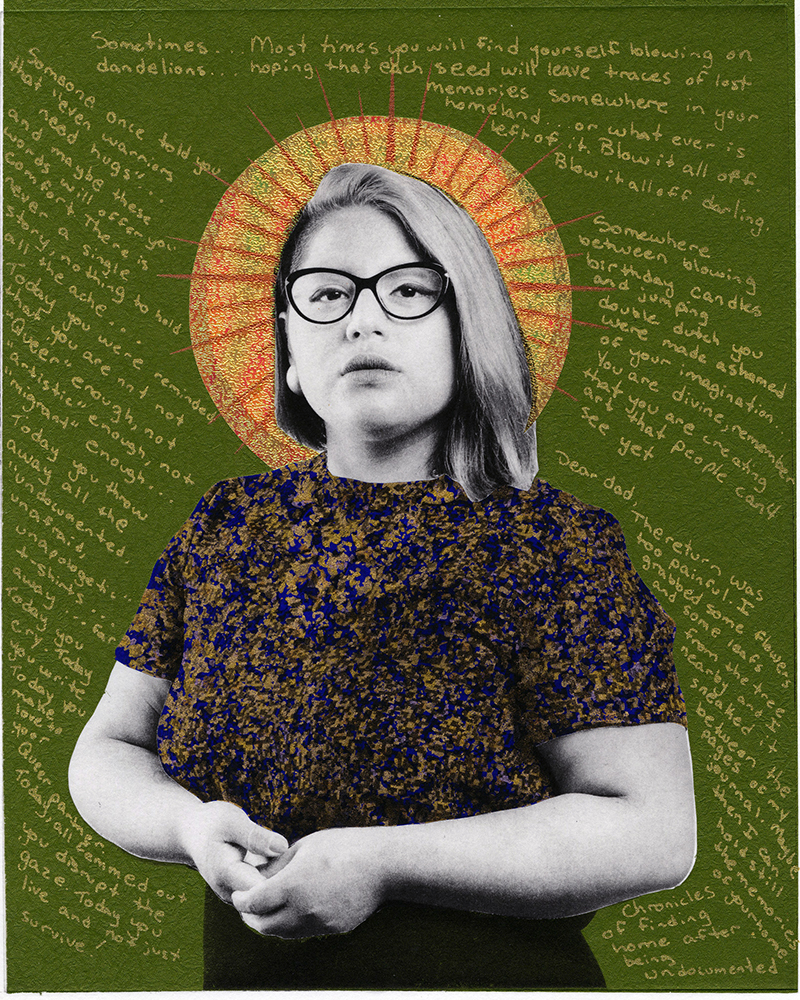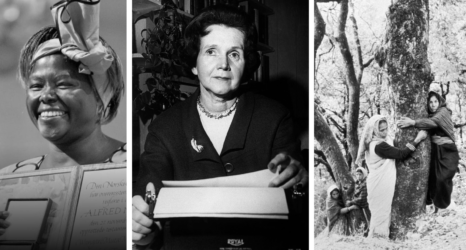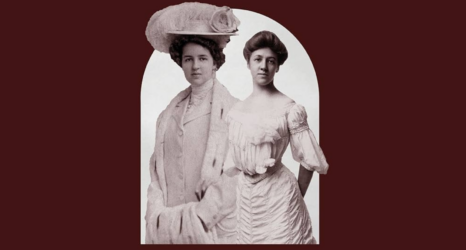The following is an excerpt from Colonize This! Young Women of Color on Today’s Feminism. Edited by Daisy Hernández and Bushra Rehman. Updated and re-released in 2019 by Seal Press.
In 2008, when I attended a Young People For (YP4) summit in Washington, DC, I met a migrant organizer, Jennifer, who told me of an undocumented-led New York organization that had just been formed to work toward relief for undocumented young people. She was a young woman of color who was telling me there were more folks like me trying to do something about this bullshit immigration system. I joined this immigrant organization, and for the next six years I mobilized and organized undocumented youth in New York City.

We used social media platforms to coordinate, to come out as undocumented to one another and to build an ecosystem of undocumented organizing and leadership. Imagine our g-chats filled with correspondence about next actions, about where to meet and what supplies to bring. We traded Facebook and Myspace messages about legislation, and which Senate staffers we had to respond to and organize against. Simultaneously, we left each other messages about fears, love, broken marriages, abortions, latest chisme and depression.
We disrupted borders via the Internet. It didn’t matter that the mainstream headlines were yet to come. We made digital organizing work for grassroots change. In person, we organized in locations that other established immigrant organizations did not want to associate with, like trailer parks in Alabama.
During this time, it was understood that we had power; we could leverage it, and we could influence legislation. Do you know who was at the forefront of all this? Undocumented queer women of color, femmes, and non-binary and gender-nonconforming folks. We were Black and Brown. We were fat and skinny and in between. We hated caps and gowns, were bilingual, often had strong accents and worked multiple jobs. We had loud mouths and big personalities. We were introverts, awkward, artists, poets, hijab-wearing, messy daters and loyal Converse shoe wearers. We had the occasional bad eyebrows.
Contrary to what has been reported, the organizing that has happened among undocumented young people has not been the first movement nor is it isolated. It has been built on a lineage of resistance from those organizing for Queer liberation and Black liberation to the sanctuary movement of the 1980s that protected war refugees from Central America. The 2006 immigrant marches especially gave us direction. So, no, our movement did not come from foundations, nonprofits or allies. The work came from our
casitas in Texas, Illinois, California, Missouri, even Maine. This was before organizations like United We Dream and the National Immigrant Youth Alliance. This was before splits in movements and mainstream tokenization.
Don’t believe the hype that the undocumented resistance was built by light-skinned cisgender straight men. Erasure has played a key role in why many of our names go unrecognized: Tania, Lizbeth, Maria, Alaa, Kemi, Daniela, Razeen, Yahaira, Viridiana, Jackie, Tereza, Tam, Cinthya, Reyna, Bamby—insert our mothers’ names here, and many other names that have been erased and mispronounced whenever people have written about undocumented, unapologetic leaders and the history of the immigrant rights movement. These were the women and gender-nonconforming organizers responsible for the first online petitions to stop the deportation of undocumented young people.
We created the leadership and organizing training toolkits that many folks use today and designed the first National Coming Out poster for undocumented youth. We were the coordinators and participants of the first action that took place in 2010 at the office of Senator John McCain urging him to vote for the Dream Act (#McCain5). We were responsible for taking over the Hart Senate Office Building that same year. Picture 21 undocumented youth demanding that senators, both Democrat and Republican, vote on the Dream Act (#Dream21). We were drafters of many local legislative proposals, including the NY Dream Act, and creators of #undocuqueer. We were the ones infiltrating detention centers and leading some of the biggest border-crossing actions. We were the reason why Deferred Action for Childhood Arrivals (DACA) became a reality for thousands of undocumented young people in 2012.
There is a lineage. Let their names be sung and recited over and over again. Let the change they strived for be named. These change-makers were my sisters, my friends, my chosen family and my support system. We were responsible for changing the nation’s sentiments about undocumented migrant young people. We amplified our narratives and forever shifted migration discourse even if we weren’t held up publicly. We did the work to claim our lives.
Back then, as we innovated and shifted history, we didn’t have the language to contextualize exactly what we were doing. The work was urgent. Feminism was not the word we used. It felt too rigid, like the papers we wanted. First- and second-wave white feminist scholars had never grouped me under their umbrella of feminism, and I had not wanted to be a part of that anyway. White feminism left out women like my mother, women who are poor, migrant, who do not get to graduate from high school, who are domestic workers—women of color who cannot dare to imagine their problems simply being about a right to vote or gender equality just being about ascending to white male roles.
I craved equity in my feminism. I craved melanin. I craved a complex understanding of bodies of color living and surviving in a capitalist patriarchy and in a xenophobic, anti-queer, anti-migrant, cis-sexist, violent world.
Professor Rupal Oza at the Women and Gender Studies Department at Hunter College had a thick accent that made academic words coming out of her mouth sound just like how I pronounced them. She made me feel like I belonged in her classroom with the white students, and she introduced me to the work of legal scholar Kimberlé Crenshaw, who coined the term “intersectionality” to describe how antidiscrimination laws fail Black women by considering gender and race as separate experiences. I began to realize that the organizing many of us were doing, and even just the way we moved through the world—this is what Dr. Crenshaw was writing about back in 1989. We were Queer, and undocumented, and Brown, and Black, and Latinx, and API, and Femme, and poor, and gender nonconforming, and bilingual, and women, and Muslim, and healers and nonbinary. When we interacted with institutions and when we pushed for legislation, we brought our full selves to the table.
My understanding of feminism began to grow. Audre Lorde’s writing and poetry reminded me that “there is no such thing as a single-issue struggle because we do not live single issue lives.” This statement helped me process the way I existed in America, especially as a Queer woman of color and migrant (not either/or). And Chandra Mohanty’s essay “Under Western Eyes” helped me build my macro-understanding of my positioning in the United States and the Global South.
As I was becoming more unapologetic about my undocumented status then, I was also getting comfortable with calling myself a “feminist.” The scholarship and lived experiences of these feminists of color helped me to claim the identity. It felt good to speak an inclusive, intentional, intersectional feminist language and to make it my own. This helped me be in dialogue with June Jordan, bell hooks, Janet Mock, Tracee Ellis Ross, Grace Lee Boggs, Octavia Butler, Sandra Cisneros, Ryka Aoki, Alice Walker and many others.
This feminism was something I could be proud of and claim; my mami querida wouldn’t be left behind in this type of feminism.





